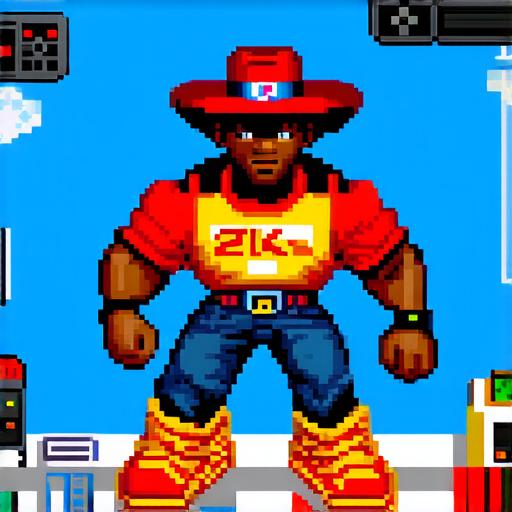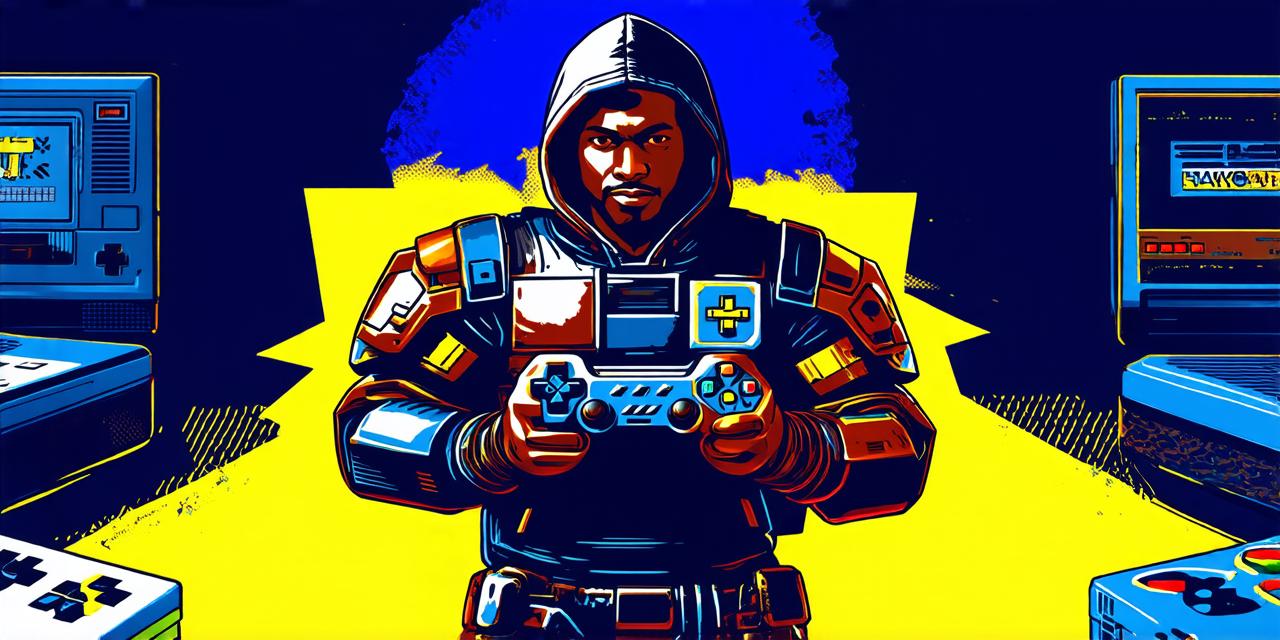The Evolution of Black Video Game Characters: A Brief Overview
Black video game characters have come a long way since their inception, with early examples dating back to the 1980s. One of the first black video game characters was Sam Fisher, who appeared in the 1985 game “Splinter Cell” as a spy. While he was not explicitly black, his character design featured elements that could be interpreted as African American, such as dark skin and facial features.
In the early 2000s, video game developers began to create more diverse and representative characters, including those of color. One of the most notable examples is Marcus Fenix from the “Gears of War” series, who was introduced in the first game in 2001. He was a black, muscular soldier who fought against an alien race known as the Locusts. His character quickly gained popularity among gamers and has since become one of the most iconic video game characters of all time.
Another prominent example of a black video game character is Master Chief from the “Halo” series, who was introduced in 2001. He is a genetically enhanced supersoldier who battles against an alien race known as the Covenant. While he does not have explicitly African American features, his character design incorporates elements of various ethnicities, including blackness.
In recent years, video game developers have continued to create more diverse and representative characters, including those of color. For example, in 2017, Ubisoft introduced Bayonetta, a half-African American woman who stars in the “Bayonetta” series. Her character has since become one of the most popular and beloved video game characters of all time, with many fans praising her unique design and personality.
The Impact of Black Video Game Characters on Society
Black video game characters have had a significant impact on society, both in and outside of the gaming world. One of the primary ways they have affected society is by providing representation for underrepresented groups. Historically, video games have been dominated by white male characters, which has often led to feelings of exclusion for people from other backgrounds. By creating black video game characters, developers have helped to create a more diverse and inclusive gaming world.
In addition to providing representation, black video game characters have also contributed to the growth of the gaming industry as a whole. Research has shown that consumers are more likely to purchase games featuring diverse characters, as they are seen as more relatable and inclusive. This has led to an increase in demand for games featuring black characters, which has in turn led to an increase in representation within the gaming industry.
Furthermore, black video game characters have played a role in shaping cultural attitudes towards race and diversity. By depicting black characters in positive ways, games can help to combat stereotypes and promote understanding between different races and ethnicities. This has led to a more inclusive and tolerant society, both within and outside of the gaming world.
Case Studies: How Black Video Game Characters Have Made a Difference
There are many examples of how black video game characters have made a difference in society. One such example is the character of Sam Fisher from “Splinter Cell”. While he was not explicitly black, his character design featured elements that could be interpreted as African American, which helped to create a more diverse and inclusive gaming world.
Another example is the character of Master Chief from the “Halo” series. His genetically enhanced abilities and battle against an alien race have made him one of the most beloved video game characters of all time, with many fans praising his unique design and personality. In addition to being a popular character, Master Chief has also become a symbol of hope for many people, as he battles against evil forces that threaten humanity.
Finally, the character of Bayonetta from the “Bayonetta” series is another example of how black video game characters can make a difference in society. Bayonetta’s unique design and personality have made her one of the most popular and beloved video game characters of all time, with many fans praising her for breaking stereotypes and promoting diversity within the gaming industry.
Comparisons and Conclusions: The Evolution of Black Video Game Characters
In conclusion, black video game characters have come a long way since their inception, with early examples dating back to the 1980s. Today, video game developers are creating more diverse and representative characters, including those of color, which has helped to create a more inclusive and tolerant society both within and outside of the gaming world. By providing representation for underrepresented groups and contributing to the growth of the gaming industry, black video game characters have played an important role in shaping cultural attitudes towards race and diversity.
As the gaming industry continues to evolve, it will be fascinating to see how black video game characters continue to play a role in this evolution. It is likely that we will see more diverse and representative characters being introduced in the future, as developers continue to strive for inclusivity and representation within their games. Whatever happens, it is clear that black video game characters have had a significant impact on society, and will continue to do so for years to come.
FAQs: Frequently Asked Questions About Black Video Game Characters
Black video game characters have had a significant impact on society, both in and outside of the gaming world. One of the primary ways they have affected society is by providing representation for underrepresented groups. Historically, video games have been dominated by white male characters, which has often led to feelings of exclusion for people from other backgrounds. By creating black video game characters, developers have helped to create a more diverse and inclusive gaming world.
In addition to providing representation, black video game characters have also contributed to the growth of the gaming industry as a whole. Research has shown that consumers are more likely to purchase games featuring diverse characters, as they are seen as more relatable and inclusive. This has led to an increase in demand for games featuring black characters, which has in turn led to an increase in representation within the gaming industry.
Furthermore, black video game characters have played a role in shaping cultural attitudes towards race and diversity. By depicting black characters in positive ways, games can help to combat stereotypes and promote understanding between different races and ethnicities. This has led to a more inclusive and tolerant society, both within and outside of the gaming world.
1. Who was the first black video game character?
Sam Fisher from “Splinter Cell” is considered one of the first black video game characters, as he was introduced in 1985 and had elements that could be interpreted as African American in his design.
2. What impact have black video game characters had on society?
Black video game characters have had a significant impact on society, including providing representation for underrepresented groups, contributing to the growth of the gaming industry, and shaping cultural attitudes towards race and diversity.
3. Are there any examples of how black video game characters have made a difference in society?
Yes, there are many examples of how black video game characters have made a difference in society, including Sam Fisher from “Splinter Cell”, Master Chief from the “Halo” series, and Bayonetta from the “Bayonetta” series. These characters have helped to create a more diverse and inclusive gaming world, promote understanding between different races and ethnicities, and combat stereotypes and negative attitudes towards race and diversity.

